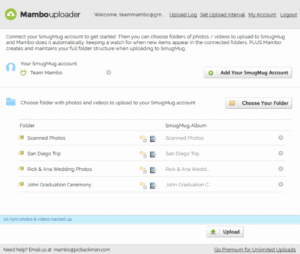-
Table of Contents
- Understanding Gmail’s Confidential Mode: A Step-by-Step Guide
- Top Tips for Enhancing Email Security in Gmail’s Confidential Mode
- The Importance of Password Protection in Gmail’s Confidential Emails
- Best Practices for Sending Confidential Attachments in Gmail
- Exploring Additional Security Measures for Confidential Emails in Gmail
- Q&A
“Secure your secrets with Gmail’s confidential email feature.”
Introduction: Sending confidential emails is crucial to protect sensitive information from unauthorized access. Gmail offers several features to enhance the security of your emails and ensure they remain confidential. In this article, we will explore the trick to send a confidential email in Gmail, maximizing its protection.
Understanding Gmail’s Confidential Mode: A Step-by-Step Guide
Gmail is one of the most popular email platforms in the world, offering a wide range of features and functionalities. One of the most useful features that Gmail offers is the Confidential Mode, which allows users to send emails with an added layer of protection. This mode is particularly useful when you need to send sensitive or confidential information and want to ensure that it remains secure.
Understanding how to use Gmail’s Confidential Mode is essential for anyone who wants to protect their emails as much as possible. In this step-by-step guide, we will walk you through the process of sending a confidential email in Gmail.
To begin, open your Gmail account and click on the “Compose” button to start a new email. In the email composition window, you will notice a small padlock icon with a clock on it. This is the icon for Confidential Mode. Click on it to enable the mode.
Once you have enabled Confidential Mode, you will be presented with a set of options to customize the security settings for your email. The first option is the expiration date, which allows you to set a specific time limit for how long the recipient can access the email. This is particularly useful when you want to ensure that the information remains confidential for a limited period.
Next, you have the option to require a passcode for the recipient to open the email. This adds an extra layer of security, as the recipient will need to enter the passcode to access the email. You can choose to send the passcode via SMS or email, depending on your preference.
Another important feature of Confidential Mode is the ability to revoke access to the email at any time. This means that even if the recipient has already opened the email, you can still take away their access to it. This is particularly useful if you realize that you have sent the email to the wrong person or if the recipient’s circumstances change.
Once you have customized the security settings for your email, you can proceed with composing the email itself. You can add attachments, format the text, and include any necessary information just like you would in a regular email. The only difference is that the email will be sent in Confidential Mode, ensuring that it remains as secure as possible.
When you are ready to send the email, simply click on the “Send” button as you would with any other email. Gmail will then encrypt the email and send it to the recipient. The recipient will receive a notification that they have received a confidential email and will be prompted to open it using the specified security settings.
In conclusion, Gmail’s Confidential Mode is a powerful tool that allows users to send sensitive or confidential information with an added layer of protection. By understanding how to use this mode effectively, you can ensure that your emails remain as secure as possible. By following the step-by-step guide outlined in this article, you can confidently send confidential emails in Gmail and protect your information from unauthorized access.
Top Tips for Enhancing Email Security in Gmail’s Confidential Mode
Email has become an integral part of our daily lives, both for personal and professional communication. However, with the increasing number of cyber threats and privacy concerns, it is crucial to take steps to protect the confidentiality of our emails. Gmail’s Confidential Mode offers a solution to this problem, allowing users to send sensitive information securely. In this article, we will explore the top tips for enhancing email security in Gmail’s Confidential Mode.
First and foremost, it is essential to understand what Gmail’s Confidential Mode entails. This feature allows users to send emails with an added layer of security. When enabled, the recipient will not be able to forward, copy, download, or print the email. Additionally, users can set an expiration date for the email, after which it will no longer be accessible. This ensures that sensitive information remains protected and does not fall into the wrong hands.
To enable Confidential Mode in Gmail, simply compose a new email and click on the padlock icon with a clock at the bottom of the compose window. From there, you can set the desired expiration date and choose whether to require a passcode for the recipient to access the email. This passcode can be sent via SMS or email, adding an extra layer of security.
One important tip to enhance email security in Confidential Mode is to enable two-factor authentication (2FA) for your Gmail account. By doing so, you add an extra layer of protection to your account, making it more difficult for unauthorized individuals to gain access. This is especially crucial when dealing with sensitive information that you want to protect as much as possible.
Another tip is to be cautious when sharing the passcode with the recipient. It is advisable to send the passcode through a different communication channel, such as a phone call or an encrypted messaging app. This ensures that even if the recipient’s email account is compromised, the passcode remains secure.
Furthermore, it is important to be mindful of the content you include in the email itself. While Confidential Mode provides an added layer of security, it does not guarantee complete protection. Avoid including highly sensitive information in the body of the email and instead, consider using password-protected documents or secure file-sharing services for such data.
Additionally, it is crucial to keep your Gmail account secure by regularly updating your password and enabling security features such as suspicious activity alerts. This helps to prevent unauthorized access to your account and ensures that your confidential emails remain protected.
Lastly, it is worth noting that Confidential Mode is not foolproof, and there are limitations to its effectiveness. Recipients can still take screenshots or photos of the email, which can compromise the confidentiality of the information. Therefore, it is essential to exercise caution and only share sensitive information through secure channels whenever possible.
In conclusion, Gmail’s Confidential Mode offers a valuable tool for enhancing email security. By following these top tips, such as enabling two-factor authentication, being cautious with passcode sharing, and keeping your account secure, you can maximize the protection of your confidential emails. However, it is important to remember that Confidential Mode has its limitations, and it is always advisable to exercise caution when sharing sensitive information. By taking these precautions, you can ensure that your emails remain as secure as possible in today’s digital age.
The Importance of Password Protection in Gmail’s Confidential Emails
The Importance of Password Protection in Gmail’s Confidential Emails
In today’s digital age, the need for secure communication has become more crucial than ever. With the increasing number of cyber threats and data breaches, it is essential to take every precaution to protect sensitive information. One way to ensure the confidentiality of your emails is by using Gmail’s confidential mode. This feature allows you to send self-destructing emails and add an extra layer of security by requiring a password for access.
Confidential mode in Gmail offers users the ability to send emails that cannot be forwarded, copied, printed, or downloaded. This feature is particularly useful when sharing sensitive information such as financial data, personal identification numbers, or confidential business documents. By enabling confidential mode, you can have peace of mind knowing that your email will only be accessible to the intended recipient.
However, even with the added security of confidential mode, it is crucial to take additional steps to protect your email. One of the most effective ways to do this is by setting a password for your confidential email. By requiring a password, you can ensure that only the recipient with the correct password can access the email, even if it falls into the wrong hands.
When setting a password for your confidential email, it is important to choose a strong and unique password. Avoid using common passwords or easily guessable information such as birthdays or names. Instead, opt for a combination of uppercase and lowercase letters, numbers, and special characters. Additionally, make sure to use a password that you have not used for any other accounts to minimize the risk of a potential breach.
To set a password for your confidential email in Gmail, follow these simple steps. First, compose your email as you normally would. Then, click on the lock icon at the bottom right corner of the compose window. This will open the confidential mode settings. Next, select the option to require a password. You can either choose to enter a password yourself or let Gmail generate a random password for you. If you choose to enter a password, make sure to share it securely with the recipient. Finally, set an expiration date for the email if desired, and click on “Save” to send your confidential email with password protection.
It is important to note that while setting a password for your confidential email adds an extra layer of security, it is not foolproof. It is still possible for someone to intercept the email or gain access to the password through other means. Therefore, it is crucial to exercise caution when sharing sensitive information via email and consider using additional security measures such as encryption or secure file sharing platforms for highly confidential data.
In conclusion, the importance of password protection in Gmail’s confidential emails cannot be overstated. By setting a password for your confidential email, you can enhance the security of your communication and ensure that only the intended recipient can access the information. However, it is essential to choose a strong and unique password and be mindful of the limitations of this feature. By combining password protection with other security measures, you can minimize the risk of unauthorized access and protect your sensitive information to the best of your ability.
Best Practices for Sending Confidential Attachments in Gmail
In today’s digital age, email has become an essential means of communication. However, with the increasing number of cyber threats, it is crucial to take steps to protect sensitive information when sending emails. Gmail, one of the most popular email platforms, offers several features to ensure the security and confidentiality of your messages and attachments. In this article, we will explore the best practices for sending confidential attachments in Gmail.
First and foremost, it is important to understand that no method is foolproof when it comes to email security. However, by following certain guidelines and utilizing the available tools, you can significantly enhance the protection of your confidential attachments.
One of the most effective ways to safeguard your attachments is by using Gmail’s built-in encryption feature. When you attach a file to an email, Gmail automatically encrypts it while it is being sent. This encryption ensures that even if someone intercepts the email, they will not be able to access the attachment without the encryption key. It is important to note that this encryption only applies to the attachment itself, not the body of the email.
To further enhance the security of your confidential attachments, you can utilize Gmail’s “Confidential Mode.” This feature allows you to set an expiration date for the email, after which it will no longer be accessible to the recipient. Additionally, you can require a passcode for the recipient to open the email, adding an extra layer of protection. It is worth mentioning that the passcode is sent separately from the email, ensuring that only the intended recipient can access the attachment.
Another important aspect to consider when sending confidential attachments is the use of strong passwords. Weak passwords are one of the primary reasons for email breaches. It is recommended to use a combination of uppercase and lowercase letters, numbers, and special characters to create a strong and unique password. Additionally, it is advisable to change your password regularly to minimize the risk of unauthorized access.
In addition to these built-in features, there are also third-party tools and plugins available that can further enhance the security of your attachments. These tools offer additional encryption options, secure file sharing, and advanced authentication methods. However, it is important to thoroughly research and choose reputable tools to ensure their effectiveness and compatibility with Gmail.
While Gmail provides various security measures, it is essential to exercise caution and be mindful of the content you are sending. Before attaching any confidential files, double-check the recipient’s email address to ensure it is correct. Sending sensitive information to the wrong recipient can have serious consequences. Additionally, avoid including sensitive information in the subject line or body of the email, as these can be easily accessed by unauthorized individuals.
In conclusion, protecting confidential attachments when sending emails is of utmost importance in today’s digital landscape. By utilizing Gmail’s built-in encryption and confidential mode features, along with strong passwords and cautious practices, you can significantly enhance the security of your attachments. Additionally, considering third-party tools and plugins can provide further protection. Remember, no method is foolproof, but by following these best practices, you can minimize the risk of unauthorized access to your confidential attachments.
Exploring Additional Security Measures for Confidential Emails in Gmail
Email has become an integral part of our daily lives, both for personal and professional communication. However, with the increasing number of cyber threats and privacy concerns, it is crucial to take additional security measures to protect sensitive information. Gmail, one of the most popular email platforms, offers various features to enhance the security of your emails, including the ability to send confidential emails. In this article, we will explore how to send a confidential email in Gmail and discuss additional security measures to protect your confidential information.
To send a confidential email in Gmail, you can follow a few simple steps. First, open Gmail and click on the “Compose” button to start a new email. In the email composition window, you will notice a small padlock icon with a clock on it. This icon represents the confidential mode feature in Gmail. Click on it to enable confidential mode for your email.
Once you enable confidential mode, you can set an expiration date for the email. This means that after the specified date, the recipient will no longer be able to access the email. Additionally, you can choose to require a passcode to open the email. This adds an extra layer of security, ensuring that only the intended recipient can access the confidential information.
Furthermore, Gmail’s confidential mode allows you to prevent the recipient from forwarding, copying, or downloading the email content. This feature is particularly useful when you want to share sensitive information but want to ensure that it remains within the recipient’s inbox and cannot be shared with others.
While Gmail’s confidential mode provides a level of security for your emails, it is important to note that it is not foolproof. Therefore, it is advisable to take additional security measures to protect your confidential information. One such measure is to enable two-factor authentication (2FA) for your Gmail account. 2FA adds an extra layer of security by requiring a second form of verification, such as a code sent to your mobile device, in addition to your password.
Another important security measure is to regularly update your password and choose a strong, unique password that is not easily guessable. Avoid using common passwords or personal information that can be easily obtained by hackers. Additionally, consider using a password manager to securely store and generate complex passwords for your various online accounts.
It is also crucial to be cautious when opening email attachments or clicking on links, even if they appear to be from a trusted source. Malicious attachments and phishing links are common methods used by hackers to gain unauthorized access to your email account and steal sensitive information. Always verify the sender’s identity and exercise caution before interacting with any email content.
Lastly, consider encrypting your emails to add an extra layer of protection. Encryption ensures that your email content is scrambled and can only be deciphered by the intended recipient who possesses the decryption key. There are various encryption tools and services available that can be integrated with Gmail to enhance the security of your confidential emails.
In conclusion, sending confidential emails in Gmail can be done easily using the confidential mode feature. However, it is important to remember that it is not a foolproof solution. To protect your confidential information as much as possible, it is advisable to enable two-factor authentication, regularly update your password, exercise caution when opening email attachments or clicking on links, and consider encrypting your emails. By implementing these additional security measures, you can enhance the protection of your confidential information and minimize the risk of unauthorized access or data breaches.
Q&A
1. How can I send a confidential email in Gmail?
Gmail offers a “Confidential Mode” feature that allows you to send confidential emails.
2. What does Gmail’s Confidential Mode do?
Confidential Mode in Gmail allows you to set an expiration date for the email, require a passcode for access, and prevent recipients from forwarding, copying, or downloading the email content.
3. How do I enable Confidential Mode in Gmail?
To enable Confidential Mode in Gmail, compose a new email, click on the padlock icon with a clock at the bottom of the compose window, and follow the prompts to set the desired confidentiality options.
4. Can I revoke access to a confidential email after sending it?
Yes, you can revoke access to a confidential email in Gmail even after sending it. Simply open the sent email, click on “Remove access” in the email footer, and confirm the action.
5. Are there any limitations to Gmail’s Confidential Mode?
While Confidential Mode provides additional security for your emails, it’s important to note that recipients can still take screenshots or photos of the email content. Additionally, it may not be fully compatible with all email clients, so recipients using other email services may experience limitations in accessing the confidential email.In conclusion, to send a confidential email in Gmail and protect it as much as possible, users can utilize the following tricks:
1. Enable Gmail’s Confidential Mode: This feature allows users to set an expiration date for the email, require a passcode for access, and prevent recipients from forwarding, copying, or downloading the email’s content.
2. Use Two-Factor Authentication (2FA): Enabling 2FA adds an extra layer of security to the Gmail account, ensuring that only authorized individuals can access it.
3. Encrypt the Email Content: Users can encrypt the email’s content using third-party encryption tools or services before sending it. This ensures that even if the email is intercepted, the content remains unreadable without the decryption key.
4. Be cautious with recipients: Verify the recipients’ email addresses to avoid sending confidential information to the wrong person. Double-checking the email addresses can prevent accidental data leaks.
5. Regularly update and secure devices: Keep devices and software up to date with the latest security patches and use strong, unique passwords to protect the Gmail account from unauthorized access.
By implementing these tricks, users can enhance the security of their confidential emails sent through Gmail and minimize the risk of unauthorized access or data breaches.









